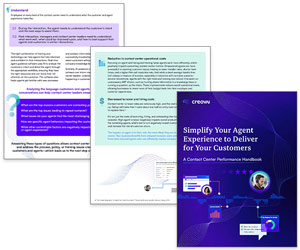Customers have more options than ever before, and their loyalty is heavily influenced by the quality of their interactions with your brand.
To consistently deliver outstanding experiences, you need a well-defined Customer Experience (CX) Design Methodology, which includes:
- Increasing headcount to improve customer satisfaction.
- Employee engagement and training to create motivated and knowledgeable staff.
- Removing customer pain points.
- Reducing Customer Effort.
- Digital transformation and improving self-service.
- Customer loyalty: using CX to retain customers and increase sales (CX is the new marketing).
That’s why we’ve created this handy guide as a quick-fire introduction to Customer Experience Design Methodology, alternatively known as CX methods, to help you get started.
Why Do You Need a Customer Experience Design Methodology?
A Customer Experience Design Methodology is a systematic approach to understanding, designing, and improving the interactions customers have with your brand.
Here are some compelling reasons for why you need one, which may also come in use when writing a business case to get buy-in from the Senior Leadership Team:
- Consistency – A methodology helps to make sure that customer experiences are consistent across all channels.
- Customer-Centricity – It keeps your organization focused on the customer, aligning processes and decisions with their needs and preferences.
- Differentiation – Exceptional experiences set you apart from competitors and can become a key differentiator in the market.
- Loyalty and Advocacy – Positive experiences foster customer loyalty and encourage them to become brand advocates, spreading positive word-of-mouth.
- Better Decision-Making – Data-driven insights help leaders make informed decisions about where to allocate resources for the most significant impact.
- Enhanced Employee Satisfaction – Engaged employees who understand and support the CX strategy are more likely to provide better service.
- Cost Savings – By identifying and addressing pain points in the customer journey, you can reduce customer churn and save on customer acquisition costs.
Key Stages of a Customer Experience Design Methodology
Developing an effective CX Design Methodology involves several key stages:
Research and Discovery
Understand your customers’ needs, pain points, and expectations.
There are various means of achieving this, including take your agents out for lunch for an honest conversation, stop tagging issues as ‘other’, make the customer a central figure in your boardroom, and more.
If you are looking for ways to identify pain points, read our article: 25 Ways to Proactively Spot Your Customers’ Pain Points.
Customer Journey Mapping

Create visual representations of your customers’ interactions with your brand.
Identify touchpoints and emotional states throughout the journey.
Just make sure this is a worthwhile exercise, as Nate Brown, Co-Founder of CX Accelerator, explains:
“Many customer journey maps are just a map to a dead end. They’re just going nowhere, and it becomes an exercise in futility that winds up in a bin somewhere – in your inbox or a physical bin in your office.
When you’re forcing teams to put themselves in the shoes of the customer, if you’re all just assuming this is how your customer feels here and putting yet another sticky note on the wall, then you need to think seriously about what happens when you all walk out of that room.”
You can find out more on how to make these journey maps more meaningful in this article on How to Improve Your Customer Journey Mapping.
Develop Prototypes and Concepts
Brainstorm solutions to improve the customer journey based on your research findings. You can then develop prototypes and concepts to address the problem.
Testing and Validation
Test your designs with real customers to gather feedback and refine them. This process helps you to make sure that the final product aligns with customer expectations.
Implementation
Roll out the improved customer experience across all relevant touchpoints, ensuring consistency.
Monitoring and Feedback
Continuously monitor customer feedback, gather data on the performance of the new experiences, and make necessary adjustments.
Employee Engagement
Make sure your employees are trained and motivated to deliver exceptional customer experiences, as they are on the frontlines of these interactions every day.
Mistakes to Avoid
When developing your CX Design Methodology, be sure to avoid these common mistakes:
Neglecting Research
Skipping thorough customer research can lead to solutions that don’t resonate with your target audience and a whole lot of wasted effort.
Not Involving Employees
Failing to engage employees in the process can result in a lack of buy-in and inconsistent implementation.
Overcomplicating the Process
Keep your methodology simple and adaptable to avoid overwhelming your team.
Ignoring Feedback
Failing to listen to customer feedback and adapt your strategy accordingly can lead to missed opportunities.
If you are looking for best-practice principles for an effective ‘Voice of the Customer’ survey, read our article: 11 Best Practices for a Voice of the Customer Survey
Rushing Implementation
Don’t rush to implement changes without going through thorough testing and validation first.
For more great insights on how you can provide a great customer experience, read these articles next:
- An Introduction to… Customer Access Strategy
- Getting Started With Customer Service Mantras and Vision Statements
- The Generation Game: How to Tailor Your CX for Different Ages
Author: Megan Jones
Reviewed by: Jonty Pearce
Published On: 10th Nov 2023 - Last modified: 22nd Oct 2025
Read more about - Customer Service Strategy, Customer Experience (CX), Customer Feedback, Customer Journey, Customer Satisfaction (CSAT), Customer Service, Service Strategy, Voice of the Customer





















